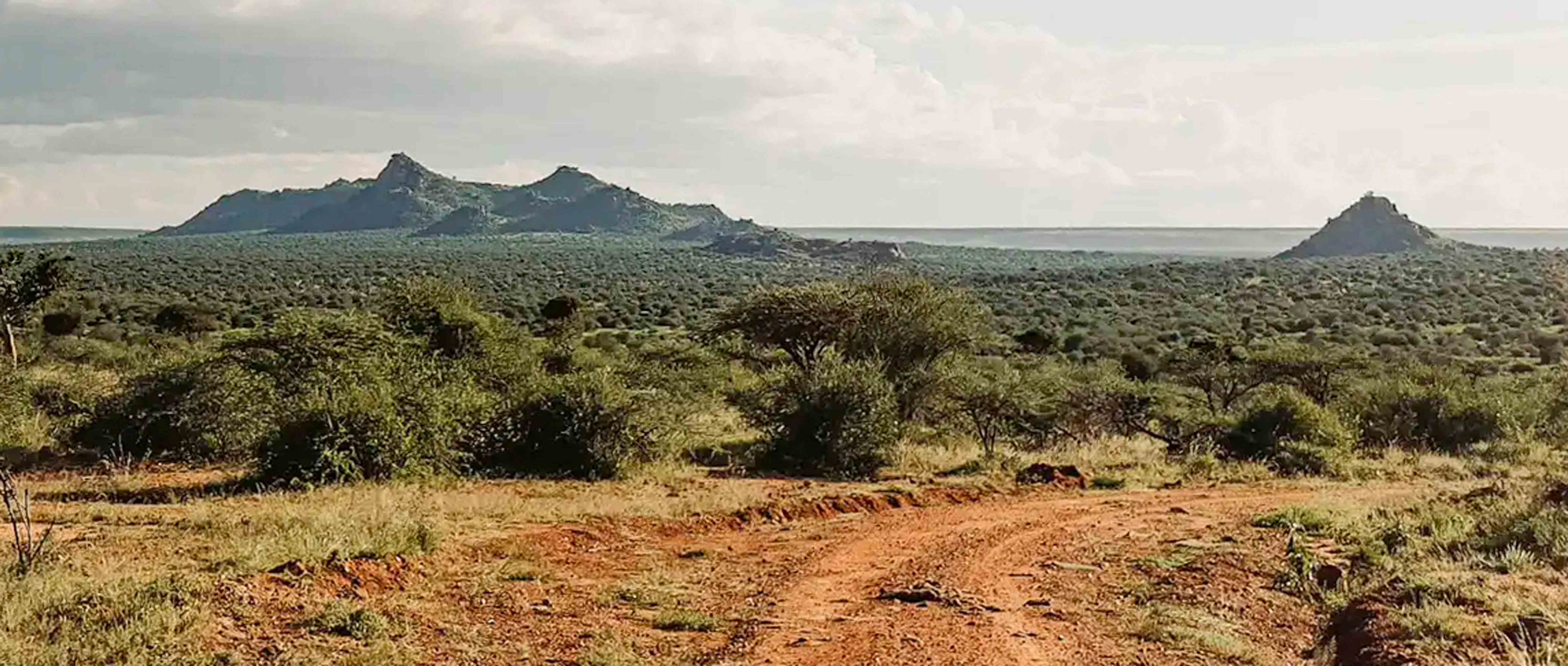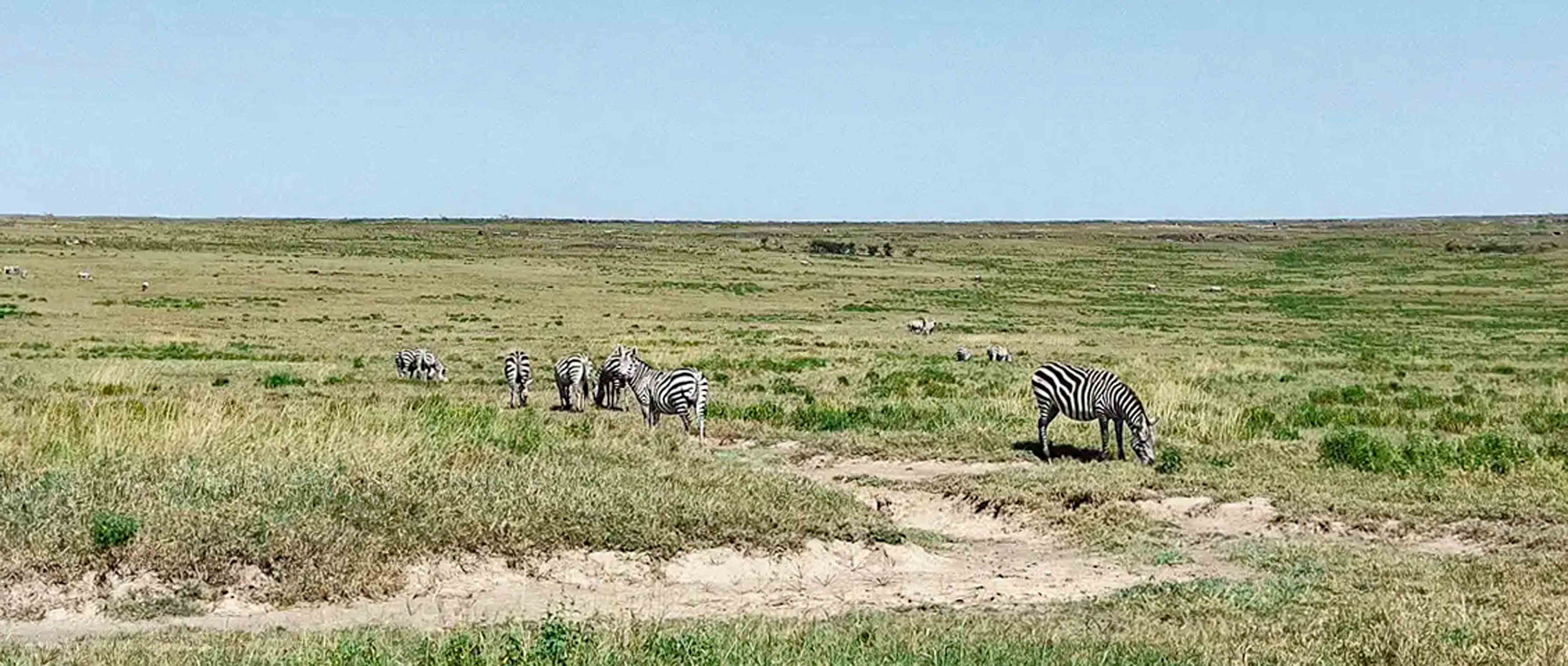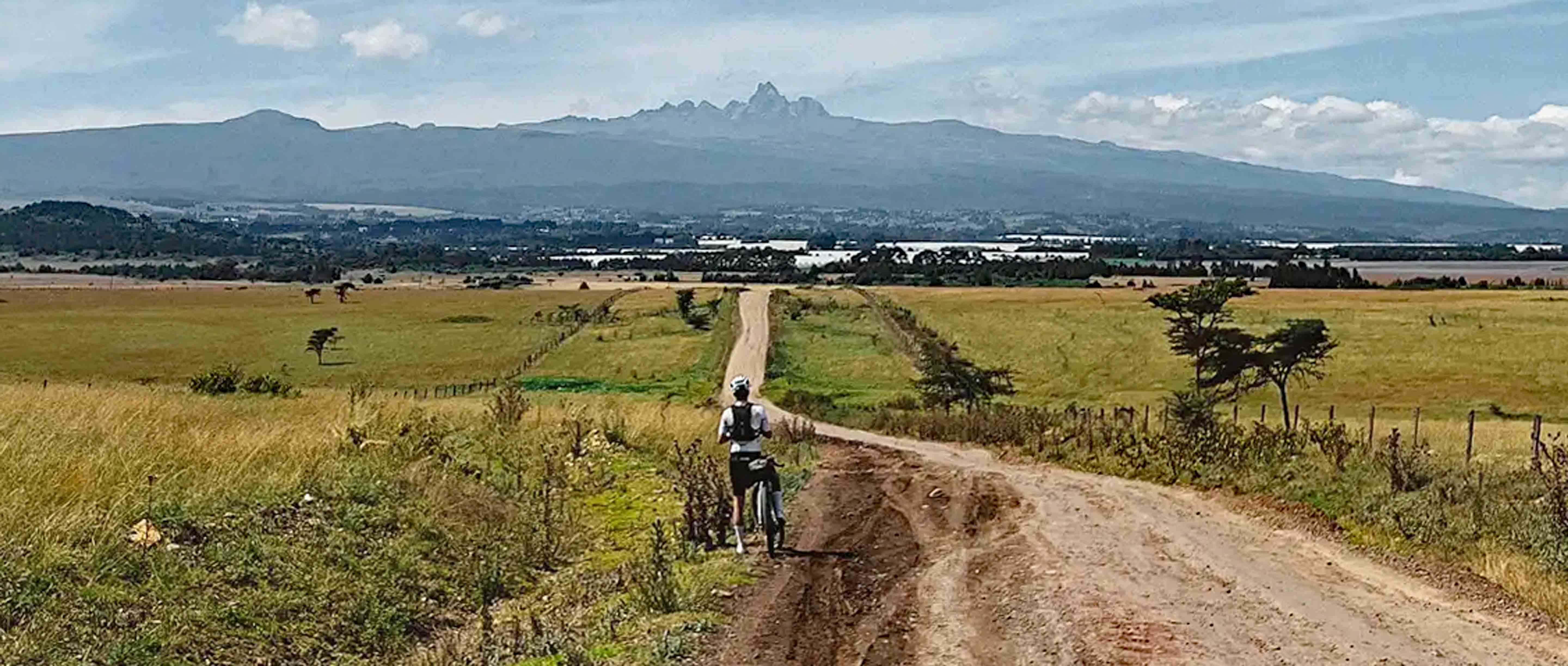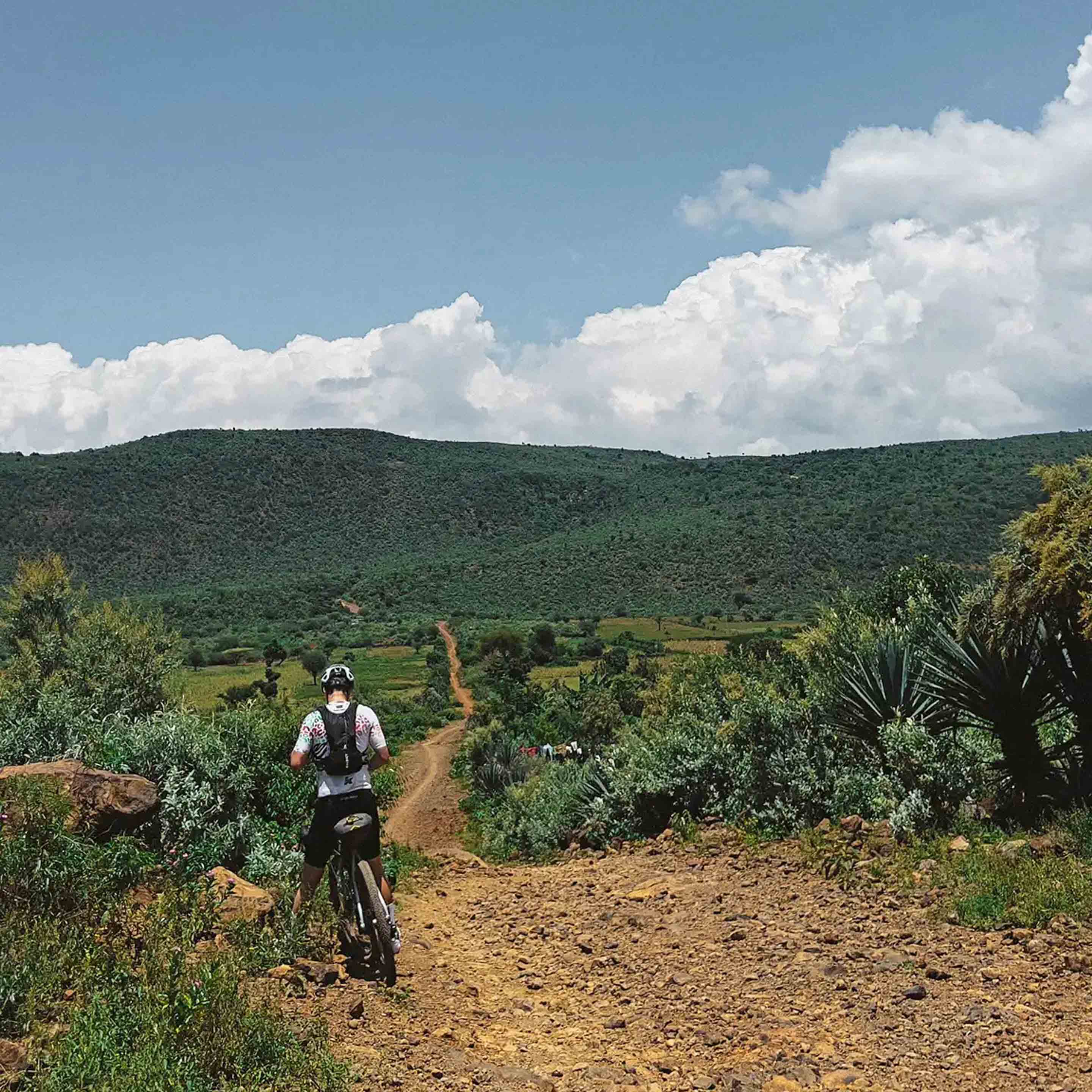Until 2021, Kenya was perhaps better known for wildlife safaris or high altitude trekking than it was as a destination for gravel riders and bikepackers, but the launch of the Migration Gravel Race saw that turned on its head. With an incredible network of dirt roads, stunning wildlife viewing opportunities and plenty of sunshine, Kenya is now well and truly on the radar of adventurous gravel riders. Julian Velasco travelled there in autumn 2024 and has sent in an amazing write-up of his adventures.

Who am I?
Every year, I try to escape with my bike, a fundamental element in both my personal and professional life, to discover new places. It's not just a form of leisure, but a way to explore and connect with different cultures.
I’ve been lucky to meet people who inspire me, like Pau and Arnau, who just returned from Morocco. Their experience, full of laughter, some mishaps and unique moments, was priceless. It's fascinating how some people manage to inspire others without needing to be in the UCI Top 10. This is magical! Pau gave me great advice for my trip to Morocco in 2023, and we've shared some journeys together - these shared adventures are even more enjoyable.

The journey
Africa never disappoints. The Kenya Bike Odyssey is an African adventure, one of those that allows you to cover 1,100 km with 15,000 meters of elevation gain in 10 days with my gravel bike. Our version of the route is a little less, but we always like to add our personal touch to the routes.
The original KBO is a linear route; I mean, it starts in Nairobi but ends hundreds of kilometres away from the Kenyan capital. For us, Xabier Barrante is a close companion on these adventures. We always like to close the loop - it’s part of the journey, and we must admit that he makes logistics easier for us. In these bikepacking trips, we carry everything we need on our bikes and don’t rely on any kind of support.
Starting from Nairobi, the route passes through various landscapes, including valleys and mountains, dense forests, lakes and rivers (where I recommend not swimming), endless plains where the wind blows strong, red dirt roads like those we discovered in Rwanda and vast savannas that made us stop more than once to take photos. In general, they are the kinds of places that, if you have even a little bit of an adventurous spirit, you’ve always wanted to visit. For me, the Great Rift Valley was one of those places.
Presenting Eric
Our experience in this part of Africa has always been spectacular. After visiting Rwanda (which in 2025 will host the UCI World Cycling Championships), Kenya has confirmed to us that these countries are perfect for enjoying the best bikepacking.
One of the creators of this route is Eric Nesbitt from RVO Cycling Kenya. A true cycling enthusiast and lover of his country, he’s eager to show it to the world at a relaxed, enjoyable pace. Eric is a key figure in the Kenyan cycling scene and we had the chance to visit him at his bike shop in Nairobi. We went to meet him before starting the route to get to know him, discover his project and soak up his advice. He has incredible knowledge of the best roads, trails and tracks throughout the country, as well as all the necessary contacts to make this project a reality.

As he told us, it took three months of exploration to design the route, plus a lot of time afterward to fine-tune it. A deep thanks to him. We’re sure we’ll meet again, whether in Mallorca, the Pyrenees, or wherever.
It’s clear that he sought out the best of the best, avoiding unnecessary sections to create the best possible experience. He even considered the traveller’s budget, removing sections that, due to access fees, didn’t provide the corresponding value.
The main challenge in developing routes like this in Kenya is that much of the land is private, so you can’t rely on maps. Smaller roads often end at closed gates or impassable fences. After Rwanda, we already have experience with situations like this and one should never underestimate a route. When it seems like you’ll reach your destination by day, you might find yourself retracing the path at midnight.
Moreover, there are certain areas that should be avoided for security reasons or restrictions. Things can change incredibly fast in Kenya, with new roads regularly being created and others being closed. Even Google Earth tends to become outdated in just a few years. Local knowledge is essential in these countries.

Why Kenya?
For us, the idea of Kenya was clear because of everything this country offers. This trip was going to be a very intense cultural immersion - a 15-day journey, 10 of which would be spent on the bike, passing through numerous cities and villages, interacting with local communities and experiencing the rich and diverse Kenyan culture daily. Gastronomy, good coffee, language, fauna, and flora: all of this made the trip unique.
When one thinks of Kenya, most people probably picture the vast savannas of famous national parks like Maasai Mara. However, Kenya, located on the equator, is much more than that if you decide to stray from the path marked by jeeps and travel agencies. It’s clear that ours was not a trip for everyone. Cycling is evolving rapidly and stages are completed faster each time, with a bigger challenge always on the horizon. But, as I say, I think the key is to adapt the goal to your reality and your desires. That’s the secret.
As happened to us in Rwanda, Kenya surprises with how the scenery can change in just a few kilometers. Landscapes, from one day to the next or in just 50 km, can be radically different: from the savanna to mountains at 2,800 meters, from lush forests to encountering a group of giraffes or a giant volcanic caldera like the Menengai volcano. I imagine there are few places on Earth that can boast such geographic diversity.

A lot of people asked me to choose between the land of a thousand hills and Kenya. The differentiating element for me compared to Rwanda is the access to wildlife. Both countries have spectacular landscapes, but in Kenya, it’s possible to spot animals almost every day. Seeing giraffes, zebras, antelopes, buffalo and elephants from the saddle is something truly special.
Kenya has always been recognised for its high level in athletics. We passed very close to Eldoret and Iten, the home of champions, as this region is known worldwide. However, until now, it had kept a relatively low profile in cycling and bikepacking in Africa, something that is changing rapidly. Cycling culture is growing, with gravel and MTB events and with professional gravel teams like Team Amani, which has a very strong background.
Along the route, we had access to multiple accommodation options in campsites and lodges. Even when only booking the day before, we never had any issues and the hospitality was excellent. Furthermore, an important factor is that English is spoken throughout the country, visas are straightforward, flights are relatively affordable and transportation connections in Kenya are simple and economical enough that even if you don’t have time to complete the entire route, it’s easy to adjust it using Nairobi as a base.

The Route
The official Kenya Bike Odyssey route starts in Nairobi and ends in Nanyuki, about 200 kilometres to the north, where there are easy public transport connections or jeep and minivan transfers back to the capital. The route mainly follows the Rift Valley, with detours to the north before crossing the inhospitable Laikipia region.
As I mentioned, we decided to return to Nairobi by bike. This meant riding hundreds of kilometres along Nyoka-Nyoka Road (Nyoka means snake in Swahili, so you can imagine what the road was like), through coffee fields, and entering Nairobi via the A2 road, which was a bit risky and “very stupid,” as Eric, the creator of this route, told us.
This was a small part of the trip where I would highlight spectacular places like the Menengai volcano, Eburru Forest, the Soysambu Game Reserve, Kedong Ranch, the Kerio Valley and Kenya's great lakes: Naivasha, Elementaita, Bogoria and Baringo.
Overall, the route passes through very calm dirt tracks, with sections of narrow trails and some stretches of road. It’s a route that crosses several conservation areas where we had to manage special permits to access with our bikes. On certain days, it’s necessary to call ahead to inform the owners that you’ll be passing through, and some accommodation options also require prior notice.
I won’t lie to you, it’s a challenging route with a lot of climbing and rough terrain, but it’s not an exaggeration to say that every day is pure enjoyment.
Before traveling to Kenya, it’s important to be clear about the climate we’ll encounter, as the terrain conditions will vary greatly depending on it, ranging from sweltering heat to constant rain. Avoiding the rainy season is key to enjoying a trip like this. It’s true that we had very hot days and sunscreen was a precious commodity, but rain can make these trips very complicated.

We went in the first half of September, which corresponds to the end of the dry season. Most of the difficulty comes from the physical challenge of this route. The profile is deceptive. It’s clear that much of it is very mountainous, with long, steep climbs and the roads are often extremely uneven and demanding. But you shouldn’t be fooled by the plains: for example, Laikipia during days 7 and 8 was extremely difficult to cross.
You won’t go hungry or thirsty. Small shops are common throughout all stages of the route. It’s true that the population distribution is nothing like Rwanda; here, the settlements are more defined, but you’ll never lack the essentials. As you might imagine, we always drank bottled water and tried to always carry at least 1 litre extra. On some days, like in Laikipia, we carried Camelbacks, as this part of the route can be the most challenging in terms of supply. It’s important to keep that in mind.
Closure
For us, cycling isn’t just about adding kilometres; it’s about living an authentic experience. That’s why we value the route designed by Eric and what it represents for cycling in Kenya so much. It’s a journey full of challenges, yes, but also of unique moments.
Karibu Kenya, Asante Eric!
If you would like to follow in Julian’s tyre prints, you can find his route here: